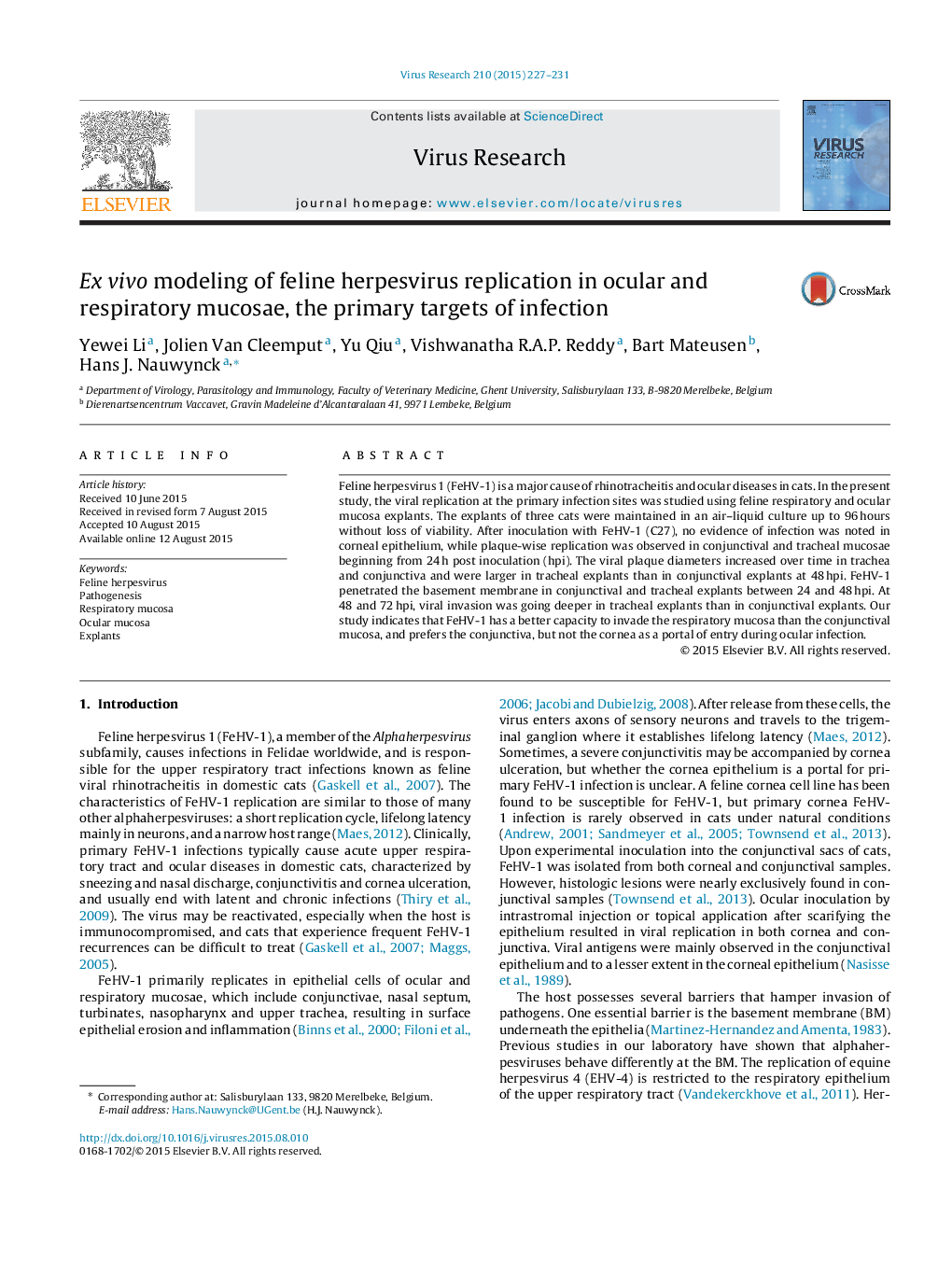| Article ID | Journal | Published Year | Pages | File Type |
|---|---|---|---|---|
| 3428058 | Virus Research | 2015 | 5 Pages |
•The aim of the present study was to elucidate the viral behavior at the primary infection sites using feline respiratory and ocular mucosa explants.•Feline ocular and respiratory mucosa explant models were set up without loss of viability up to 96 h.•FeHV-1 C27 strain replicated in conjunctival and respiratory mucosa, but not in the cornea.•FeHV-1 replicated in a plaque-wise manner and penetrated the BM after 24 hpi.•FeHV-1 has a better capacity to invade the respiratory mucosa than the conjunctival mucosa.•This work gives new insights in the interaction of FeHV-1 with mucosae and is complementary with similar work that has already been performed with other alphaherpesviruses (PrV, HSV-1, BoHV-1, EHV-1, ILTV) in the laboratory of the authors.•Taken all data together, different patterns of virus replication/invasion have been found for alphaherpesviruses in their respective species. The mechanisms of the viral invasion are now under investigation.
Feline herpesvirus 1 (FeHV-1) is a major cause of rhinotracheitis and ocular diseases in cats. In the present study, the viral replication at the primary infection sites was studied using feline respiratory and ocular mucosa explants. The explants of three cats were maintained in an air–liquid culture up to 96 hours without loss of viability. After inoculation with FeHV-1 (C27), no evidence of infection was noted in corneal epithelium, while plaque-wise replication was observed in conjunctival and tracheal mucosae beginning from 24 h post inoculation (hpi). The viral plaque diameters increased over time in trachea and conjunctiva and were larger in tracheal explants than in conjunctival explants at 48 hpi. FeHV-1 penetrated the basement membrane in conjunctival and tracheal explants between 24 and 48 hpi. At 48 and 72 hpi, viral invasion was going deeper in tracheal explants than in conjunctival explants. Our study indicates that FeHV-1 has a better capacity to invade the respiratory mucosa than the conjunctival mucosa, and prefers the conjunctiva, but not the cornea as a portal of entry during ocular infection.
